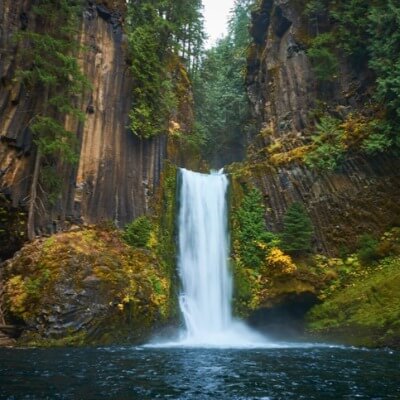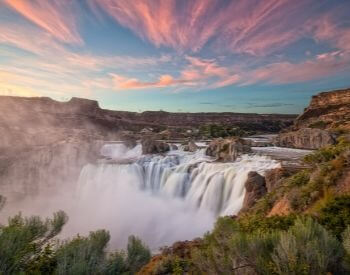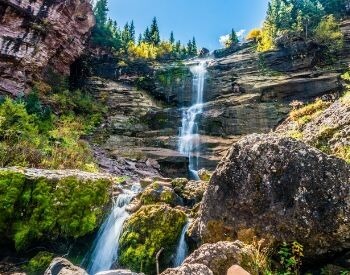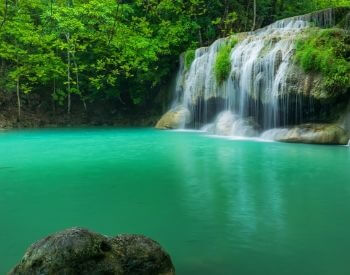
This web page contains waterfall facts for kids and is an excellent resource for anyone of any age looking to learn about these beautiful water phenomenas. Our goal is to provide you with accurate, up to date facts about waterfalls. In addition to facts about waterfalls, we provide additional resources to help you with your research on them.
The waterfall facts below will help you learn about the power of a waterfall, how waterfalls are created, how powerful a waterfall can be, what are some popular waterfalls and other waterfall related facts. We hope these waterfall facts are interesting and help you learn more about these beauitful water habitats.
If any of the below waterfall facts are inaccurate, please contact us and let us know.
19 Waterfall Facts for Kids
- A waterfall is a location along a watercourse where water flows over a vertical drop.
- They typically appear along the upper part of a watercourse where higher elevations and mountains are found and create the right conditions for a waterfall.
- Waterfalls are created by the erosion process. Sediment in water can erode soft bedrock and overtime it will completely erode all the soft bedrock until only harder rocks remain.
- There are many different types of waterfalls, a few examples are plunge, horsetail and cataract.
- A plunge waterfall is a type of waterfall that has water that descends vertically and loses contact with the bedrock. An example of a plunge waterfall is Blencoe Falls in Far North, Queensland, Australia.
- A horsetail waterfall is a type of waterfall that has water that descends vertically but maintains a bit of contact with the bedrock. An example of a horsetail waterfall is Shannon Falls in British Columbia, Canada.
- A cataract waterfall is a type of waterfall that is extremely powered and moves a large volume of water. An example of a cataract waterfall is Iguazu Falls in Argentina and Brazil.
- The waterfall with the largest flow rate in the world is Inga Falls in the Democratic Republic of the Congo.
- The Inga Falls waterfall has a water flow rate of 84,540 cubic feet per second.
- The tallest natural waterfall in the world is Angel Falls in Canaima National Park, Bolívar, Venezuela.
- The Angle Falls waterfall has a maximum height of 3,212 feet.
- One of the widest waterfalls in the world is Victoria Falls in Southern Africa.
- The tallest artificial waterfall in the world is Cascata delle Marmore, created by the Ancient Romans in Italy.
- The Cascata delle Marmore waterfall has a maximum height of 541 feet.
- Waterfalls can be a popular tourist destination, like the Niagara Falls in North America.
- It’s estimated over 30 million people visit Niagara Falls every year.
- Waterfalls are beautiful but can be dangerous. Many people every year die trying to go over a water.
- Do not try to go over a waterfall, you can land on rocks and other items below the surface.
- Do not go under the pouring water of a waterfall. Objects like rocks and branches that go over the top of a waterfall can land on you while you’re under it.
Pictures of Waterfalls



Additional Resources on Waterfalls
- About Waterfalls – Learn more about waterfalls on the National Geographic website.
- Where is Earth’s Largest Waterfall? – Visit the NOAA website and learn where the largest waterfall on Earth is located.
- Waterfall – Wikipedia – Explore the Wikipedia entry on waterfalls to learn more about the beautiful water phenomona.
- Waterfall – Britannica – Discover more cool facts and information about waterfalls on the Britannica website.
